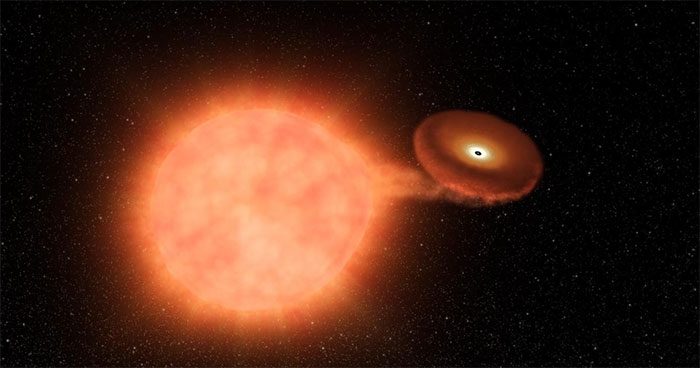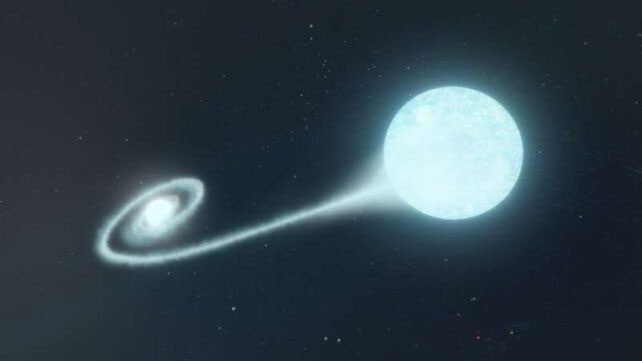When stars like the Sun die, they tend to emit a whimper rather than an explosion.
According to Science Alert, astronomers have, for the first time, detected radio signals from such an event in a galaxy over 400 million light-years away from Earth. This discovery was published on May 18 in the journal Nature, providing intriguing clues about how a companion star is affected.
The Explosion of a Dying Star

The explosion of a white dwarf. (Image: NASA).
When stars heavier than the Sun by eight times begin to exhaust their nuclear fuel in their cores, they shed their outer layers. This process creates colorful clouds of gas and leaves behind a hot, dense core known as a white dwarf.
The Sun will undergo this transformation in about 5 billion years, gradually cooling and fading away. However, if a white dwarf somehow gains mass, a self-destruct mechanism will kick in when it exceeds about 1.4 times the mass of the Sun. This will lead to a thermonuclear explosion known as a Type Ia supernova.
The question then arises: where does the additional mass come from to fuel such an explosion? Scientists previously thought it might be gas siphoned off from a larger companion star in a close orbit. However, stars tend to be messy, expelling gas all over the place.
A supernova explosion would shock any expelled gas, causing it to emit radio wavelengths. Yet, despite decades of searching, no young Type Ia supernovae have been detected using radio telescopes.
Consequently, researchers began to theorize that Type Ia supernovae must consist of pairs of white dwarfs spiraling inward and merging in a relatively clear manner, leaving no shocked gas and no radio signals.
A Rare Type of Supernova
The supernova 2020eyj was discovered by a telescope in Hawaii on March 23, 2020. For the first seven weeks, it behaved like other Type Ia supernovae. However, in the following five months, it did not fade in brightness and began to show characteristics indicating an unusual increase in helium gas.

A companion star losing material just before the explosion. (Image: Science Alert).
Researchers began to suspect that supernova 2020eyj belonged to a rare subclass of Type Ia supernovae.
To confirm this, they decided to check for enough shocked gas to generate radio signals. Since the supernova was too far north to be observed by telescopes like the Australia Telescope Compact Array near Narrabri, they had to use a series of radio telescopes across the UK to observe the supernova about 20 months after the explosion.
For the first time, they clearly detected a very young Type Ia supernova in radio wavelengths. This was further confirmed by a second observation about five months later. This marked a significant turning point, indicating that not all Type Ia supernovae are created by the merger of two white dwarfs.
The Whispers of a Dying Star
One of the most notable characteristics of Type Ia supernovae is that they all seem to reach the same peak brightness. This aligns with the idea that they all attain a certain mass before exploding.
This property helped astronomer Brian Schmidt and his colleagues reach a Nobel Prize-winning conclusion in the late 1990s. Their conclusion suggested that the expansion of the universe since the Big Bang is not slowing down under the influence of gravity (as was expected), but is instead accelerating due to effects known as dark energy.
That is why Type Ia supernovae are important cosmic objects and we still do not know precisely how and when these stellar explosions occur. What makes them so stable remains a concern for astronomers.
Furthermore, if pairs of white dwarfs merge with a total mass three times that of the Sun, why do they release the same amount of energy?
Scientists hypothesize that supernova 2020eyj occurred when enough helium gas was siphoned off from the companion star and brought to the surface of the white dwarf, pushing it past the mass limit.
However, the question now is why this radio signal has never been seen in any other Type Ia supernova. The most reasonable explanation may be that patience and perseverance are sometimes rewarded in unexpected ways. In this case, patience allowed researchers to hear the whispers of a distant dying star.





















































